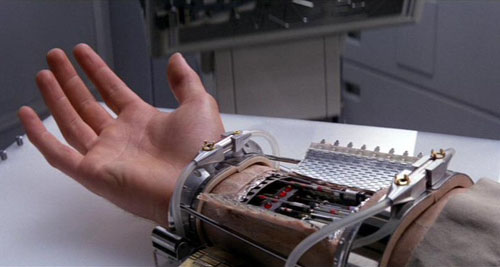For all of you geeks that have had your head in the sand, artificial intelligence has hit a milestone. Yesterday, IBM’s Watson trounced these bags of meat known as Ken Jennings and Brad Rutter in Jeopardy. If I ruined the result of the match, I apologize, but I figure posting a day after is enough notice for anyone that was following this from the start. For some more background on Watson and behind the scenes info, check out my original post on this. I have to admit that I was rooting for Watson from the start. I was a bit worried when after the first day in the tournament Watson was only tied for first place. I’m not sure what happened between the first and second matches, but Watson rocketed ahead in the second day and never looked back.
I think IBM might have been in a rush to show off their new creation. It was interesting to see the answer confidence levels during the rounds, often revealing some really wacky possible answers. Watson crashed several times during the second day of filming, nothing a regular viewer would notice while watching the recorded match on TV. One criticism I’ve heard about the match was that Watson was fed the questions electronically rather than relying on voice and character recognition. I have to agree that the electronic delivery could have been an advantage. Had voice recognition and OCR functionality been used in Watson, the victory would be quite a bit more impressive. I could clearly see the two mere mortals struggling to buzz in and shake in frustration when Watson was faster. The producers touted the physical buzzer plunger that Watson had to activate, but I still think that Watson had the advantage.
I would be interested to see a rematch in a year but with only inputs into Watson be voice and video of the Jeopardy board. After all, Deep Blue was given a second chance versus Garry Kasparov, so why not give the humans a second chance on more equal footing? It is quite possible that programming algorithms over the year would improve enough so that Watson still would win, despite the reliance of voice recognition and OCR. In that case, the victory would mean that much more. Even if you know the outcome already, I still recommend watching the matches. I already saw the Nova special, so I skipped through most of the background stuff from the IBM folks. Here is a link to my YouTube playlist that has the three episodes broken into 6 videos. Check it out! Then you can tell your grandchildren how you watched a computer beat humans in Jeopardy for the first time. Then they’ll ask, “Humans were allowed to play Jeopardy back then?”

